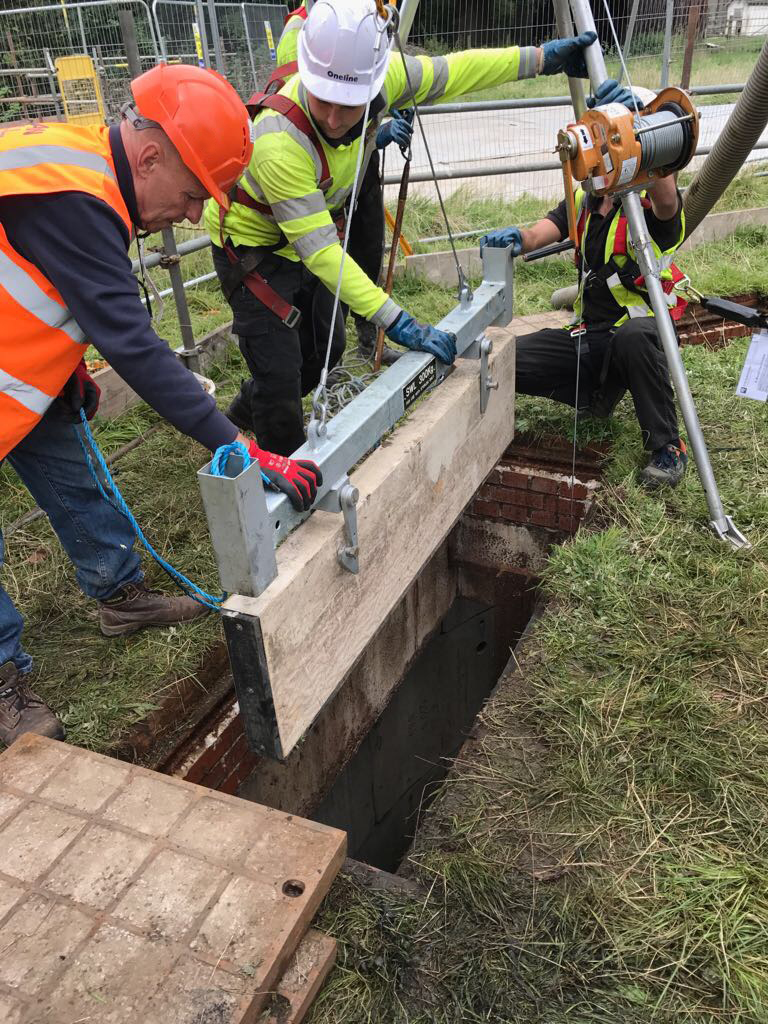
The use of Combined Sewer Overflows (CSOs) continues to place water companies under intense scrutiny. In response to bleak Environment Agency figures and scathing media reports, policymakers and the public have called for tighter management and tougher enforcement.
The move to better has begun. In March 2022, the Department for Environment, Food and Rural Affairs (DEFRA) published a consultation on its Storm Overflows Discharge Reduction Plan. The document outlined Government’s plan to address sewage overflows, detailing actions for operators, regulators, and consumers. At the same time, water companies are exploring innovative solutions to boost network capacity and cut reliance on CSOs.
Matthew Humphreys, Utilities Sector Manager, Adler and Allan, discusses the role of ongoing assessment and maintenance in the race to reduce CSO spill incidents by 320,000 before 2050 – and the importance of changing the national narrative.
Reframing the CSO situation
In recent years, a growing population, ageing infrastructure, and changing climate have placed extreme pressure on the UK’s water system. Centuries-old pipework has buckled under the strain, and CSO discharges – the system’s in-built ‘release valve’ – have sharply increased.
Environment Agency (EA) statistics show that the ten UK water and wastewater companies expelled raw sewage into rivers more than 400,000 times during 2020. The EA’s Event Duration Monitoring (EDM) data – which tracks when spills happen and how long they last – shows the releases discharged for 3.1 million hours.
Water companies are taking steps to right their wrongs, including investing £7.1 billion between 2020 and 2025 to protect the environment. Of this, £3.1 billion is earmarked specifically for storm overflow improvements. Similarly, all storm overflows will be monitored by the end of 2023 (up from 80% currently) and operators must report the frequency and duration of spills to the EA on an annual basis.
To successfully address the CSO issue, however, we need to tackle root cause – which is not as cut and dry as the media makes out. CSOs are an essential part of the sewer network, not a defect of it. They were originally created to prevent drains being overwhelmed in heavy rainfall and backing up into homes, businesses, and roads.
The rise in CSO spills is often attributed to overpopulation and overdevelopment. In other words, too many people and too many houses, generating more wastewater than the system can deal with.
The problem, however, is more closely linked to more frequent and heavier rainfall exceeding the hydraulic capacity of the network. And that’s where our quickest, most cost-effective fixes will spring from.
Real-world CSO reduction strategies
When the government’s Storm Overflows Taskforce investigated ways to reduce or eliminate CSO discharges, they found that a complete separation of sewage and rainwater systems would remove the need for storm overflows.
The solution, however, comes at a cost of £350 billion to £600 billion and would bring untold disruption to our towns and cities. An alternative approach – building storage tanks to gather excess water during heavy rainfall – has a price tag of up to £240 billion. Both options considerably ramp up UK carbon emissions.
There is hope, however, in the here and now. With a combined effort between consumers and water companies, it’s possible to claw back capacity within our existing infrastructure and relieve the burden on CSOs.
The government consultation document urges public support and behavioural changes to limit rainwater volumes in our sewers. Calls to action include:
- Responsible construction of hard surfaces (such as patios) that prevent natural water drainage. Permeable surfaces, soakaways, and rain gardens are recommended instead.
- Disposing of fats, oils, greases, wet wipes, and nappies in waste receptacles, rather than down sinks and toilets.
- Throwing wet wipes in bins, not in toilets, and buying biodegradable options. Wipes make up more than 90% of the material that cause sewer blockages.
For water companies, the focus should be boosting network efficiency and performance, from upper catchment to release. Expert assessments and planned preventative maintenance are your most efficient starting points.
Using assessments to understand your network
An experienced environmental consultant can provide an actionable view of your estate. Using a range of specialist assessments, they’ll highlight infrastructure issues that contribute to costly CSO spills – from misconnected surface water drains to groundwater intrusion. You’ll prioritise failing assets for repair and pinpoint opportunities to maximise throughput – with minimum outlay.
Infiltration surveys
Typically conducted when the water table is high, infiltration surveys identify weak spots in your network that allow excess water to enter. Engineers use boreholes and water table measurements to evaluate high flow areas for signs of ingress. Stretches of clean water are then targeted and repaired at their source.
Impermeable area studies
Impermeable area studies (IAS) assess the catchment of a CSO or pumping station that’s overloaded during rainfall. The survey tracks the route of surface water from roofs and hardstanding to either a foul or storm drain, flagging where the two systems combine and any associated pollution hazards and CSO discharge risks. Output includes detailed data, images, and models showing overall infrastructure capabilities in storm conditions.
SOAF programmes
A storm overflow assessment framework (SOAF) is a five-step programme that identifies your worst offending CSOs, determines why they’re discharging, and defines specific improvement measures. Through Event Duration Monitoring, hydraulic assessments, and environmental and aesthetic impact studies, SOAFs provide the data you need to stay compliant, effectively plan spend, and direct funds where they’re needed most.
Raising performance with planned preventative maintenance

The blue-sky CSO solution is a wholesale separation of foul and surface water systems. Realistically, water companies need workable alternatives that allow for affordable upgrades and make the most of existing assets.
Once assessments have taken a temperature check of your estate, a programme of planned preventative maintenance can buy you both time and capacity.
Syphon clearance
Syphon blockages restrict pipes’ hydraulic capacity, reduce flow, and overload CSOs, increasing the odds of a sewage spill. Routine maintenance involves comprehensive checks for wear and tear, fractures, and bottlenecks. To clear the choking effects of debris, specialists use high-pressure water jetting to remove roots, silt, concrete, bricks, and grout build-up. Larger pipe obstructions are eliminated by powerful vacuum tankers, while environmentally friendly recyclers treat and re-use water for jet cleaning.
Drainage repairs and planned preventative maintenance (PPM)
A set schedule of network cleaning, repair, and maintenance can head off pollution incidents before they happen. Maintaining fundamentals like drainage installations, sewer connections, pumping stations, and sewage treatment/septic tanks lifts performance and extends the life of your estate. Smart, selective upgrades – such as the construction of supplementary storm tanks – tackle volume challenges in a targeted manner, helping your infrastructure handle increased wastewater without relying on CSO releases.
A joint environmental effort
CSO use is a complex problem that requires collaboration, cooperation, and a new conversation. Because while water companies own the assets, we all own the issues of climate change, population growth, and environmental responsibility. The Government’s Storm Overflows Discharge Reduction Plan will set out the shared path for regulators, operators, and the public – and it’s time to work together.
Intelligent network management can make rising to the CSO challenge much more achievable.



